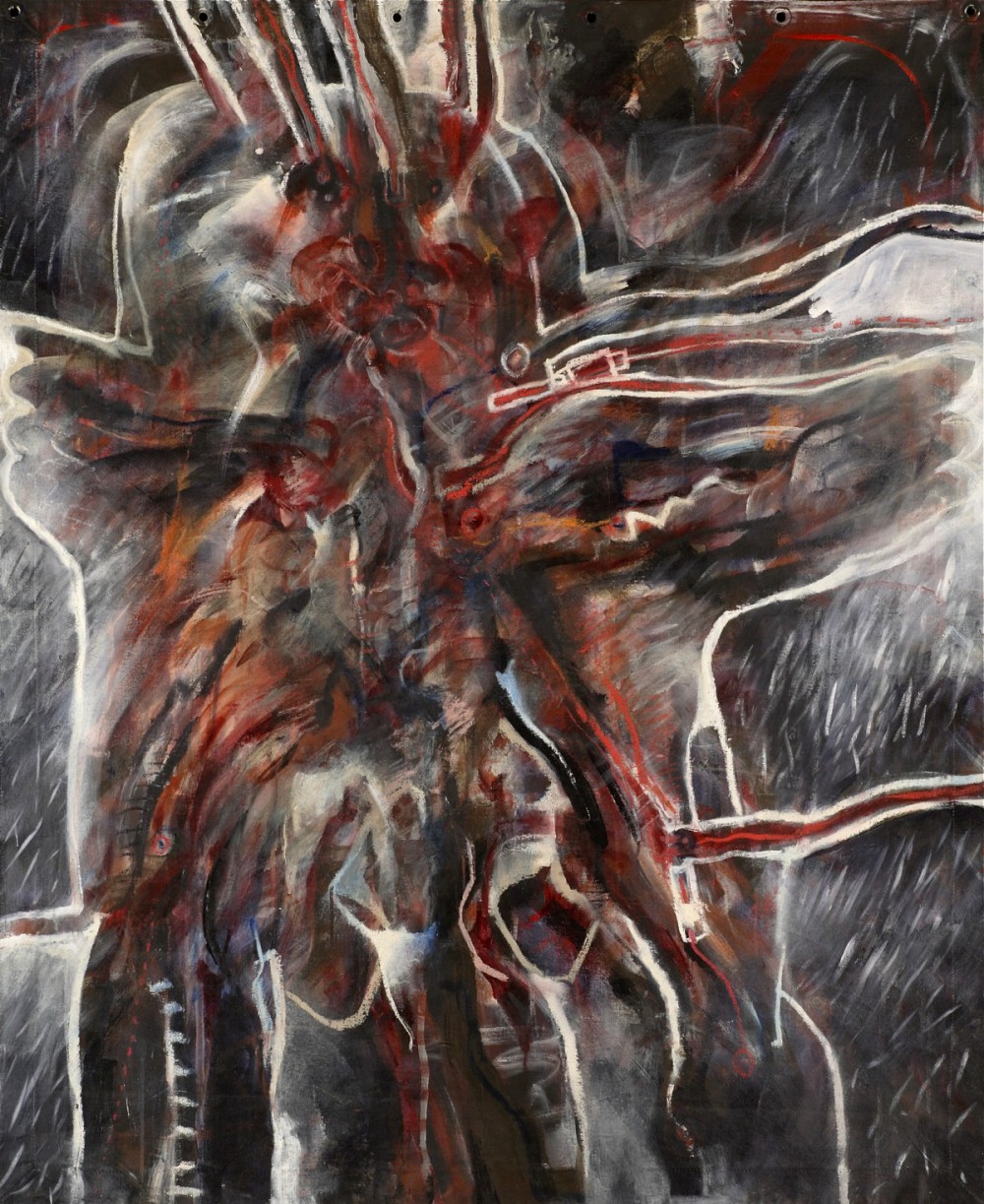
This is the kind of place where Ashley Smith died in 2007. It is also the kind of place where Julie Bilotta gave birth on a cement floor last year.
It’s the place where prisons send people to punish the already imprisoned.
I’m writing with pencil and paper from a solitary confinement cell in the segregation unit – the “Hole” – at the Central North Correctional Centre (CNCC), a maximum security provincial prison in Penetanguishene, Ontario. Here we spend 23.5 hours a day or more locked in an eight-by-twelve-foot cell. We are allowed nothing but one religious book and a pencil and paper, in addition to our prison-issue clothes (but no shoes) and toiletries (disposable toothbrush and toothpaste, a bar of soap, a towel). We get access to the yard – a large caged balcony – for 20 minutes a day, and a shower every second day. On alternating days we’re allowed a 20-minute phone call.
People like me on “administrative segregation,” isolated for security rather than punitive reasons, are granted a few extra “privileges.”
By contrast, people in the Hole for misconduct are put on LOAP (Loss of All Privileges). Following adjudication, a fancy word for the extra-legal disciplinary procedures that masquerade as hearings, one may be put on LOAP for up to 30 days. This means no access to writing materials, phone, mail, or any reading material but the Bible. The luxuries of a mattress, sheets, and blanket are withheld 14 hours a day.
The deprivation of being on LOAP can become a vortex: a spiral into personal oblivion. At its upper reaches, spending 30 days in solitary confinement with no stimulus is tantamount to torture. In response to these conditions many people act out: from frustration, rage, and desperation. They revolt. This can lead to new misconduct charges, extending their time on LOAP, or even to new criminal charges, extending their sentences. Some become trapped in this torturous cycle indefinitely.
“They push you till you snap,” a man imprisoned in these circumstances told me. Days later, the prison equivalent of a riot squad rushed his cell. Dressed in full storm trooper gear, they dragged him off to a separate section of the unit – medical segregation – and threw him into “the rubber room.”
People who have a history of self harm, or who threaten to hurt themselves, are often put in a “suicide gown,” which is designed to be untearable. They a get a flimsy mattress and blanket made from the same tough material, and nothing else.
Ashley Smith was wearing a suicide gown when she died.
Once someone is in the segregation unit, or Hole, there is almost nothing the guards can do if he or she is in distress. They can either be lenient (breaking the rules of the institution) or punish people further. Luckily, the segregation unit guards here at the CNCC seem to tend towards leniency.
Guards are not metal health professionals, yet an alarmingly high percentage of prisoners in segregation units suffer from inadequate support for mental health conditions, ranging from PTSD and ADHD to severe dissociative disorders and schizophrenia. Many days the halls echo with cries of anguish.
It could happen anywhere
The Toronto Star’s February 7 headline for its story on the inquest into 19-year-old Ashley Smith’s prison death reads: “Kitchener correctional officer fell in line despite orders that were ‘clearly ridiculous.’” Smith was imprisoned at the Grand Valley Institute (GVI), a federal women’s penitentiary in southern Ontario, where she cut a piece of fabric from her prison gown and choked herself to death. The guards, following orders, simply watched her die.
According to the Star, GVI correctional officer Melissa Mueller “shook with frustration” at the inquest and testified that “there are inmates who need a level of help that she doesn’t know how to provide.” It is painfully clear this is also true for the guards at the CNCC. There is only one psychiatrist for a prison population of 1,200. What happened to Ashley Smith in 2007 could easily happen in this place.
Ashley Smith wasn’t the only name of an imprisoned woman to appear in the Star on February 7. Also featured was the story of pregnant prisoner Julie Bilotta, who “said jail staff didn’t believe she was in labour and ignored her pleas […] She gave birth to a boy, Gionni Lee Garlow, on the cement floor of her cell.” But Bilotta’s pleas were not totally ignored. In fact, it was her refusal to stop crying for help that landed her in the segregation cell where she gave birth.
This too could happen at the CNCC. There are nearly 200 women imprisoned here on another unit. And unlike Ashley Smith, Bilotta was imprisoned in a provincial facility, like the CNCC, in Ottawa. The Star notes that Ontario’s Mother-Child Coalition for Justice “has repeatedly asked to meet Ontario Corrections Minister Madeleine Meilleur to discuss the plight of women in jail.” And “those calls have gone unanswered.”
Prisoners here at the CNCC are all too familiar with being ignored by the Ontario Ministry of Community Safety and Correctional Services. Many imprisoned people, as well as lawyers and prisoners’ advocates with whom I’ve spoken, feel there is no real accountability for what occurs in Ontario prisons.
Neither the Ontario Ombudsman nor the Client Conflict Resolution Unit of the provincial Ministry is receptive to queries and complaints by prisoners and their advocates. Cindy Berry, the prison warden who was fired after Ashley Smith’s death, is now a senior project officer at the Correctional Service of Canada’s Ontario regional headquarters.
Funding and fostering mental health
In a recent letter to me, my friend Danielle asked what I thought about calls for increased funding for psychiatric programs in prisons, given that “criminalization and pathologization work hand in hand,” and state-run mental health services seem to “range from paternalistic to full-on abusive.”
While there are indeed historic and ongoing linkages between pathologization and criminalization, as well as irredeemable problems with state-run services, the reality is there are thousands of prisoners in state-run institutions whose suffering is unnecessarily compounded by woefully inadequate mental health supports. There is thus a dire need for harm reduction strategies and initiatives, including psychiatric services.
Ideally, I believe mental health supports should be funded and fostered at the most grassroots levels to build community-based structures that meet people’s needs. This would keep people out of prison and freer from state oppression. That said, I support increased funding for prison-based mental health support, including psychiatric programs, and believe it is desperately needed.
Unlike many people who identify as prison abolitionists, I do not necessarily oppose all increases to prison spending. The key is that any budget increases must be directly tied to per-prisoner spending (on programming and services), not, as now, on an expanding regime of incarceration that slashes per-person spending while swelling the prison population.
Better support for mental health is needed in both federal and provincial prisons, especially with the recent tabling of the Not Criminally Responsible Reform Act by the federal Conservatives. This legislation concerns people found Not Criminally Responsible on Account of Mental Disorder, and would mean increased rates of potentially indefinite detention and incarceration for people with mental health issues. Under the Act, their release will depend on a risk assessment, whose outcome one can imagine will largely depend on the level of mental health support available while in custody.
With dedicated mental health professionals on all segregation units, with adequate staffing and better staff training, with robust mental health support programming, and with enhanced oversight and accountability, it would be easier to believe another death like Ashley Smith’s isn’t just a matter of time. Of course, if we really want to guarantee this failed prison system doesn’t take any more lives, we could stop locking people in cages.
Postscript: This article was written between February 6 and 12, before I was returned to general population after a four-week security review in the segregation unit. Once out of the Hole, I had a chance to read a blog post by Nyki Kish, an activist imprisoned at Grand Valley Institute, where Ashley Smith died. Kish is a brilliant writer and advocate against the prison system and I strongly encourage people to read her blog post “The Unempowerable Prisoner.”


_780_520_90_s_c1.jpg)



